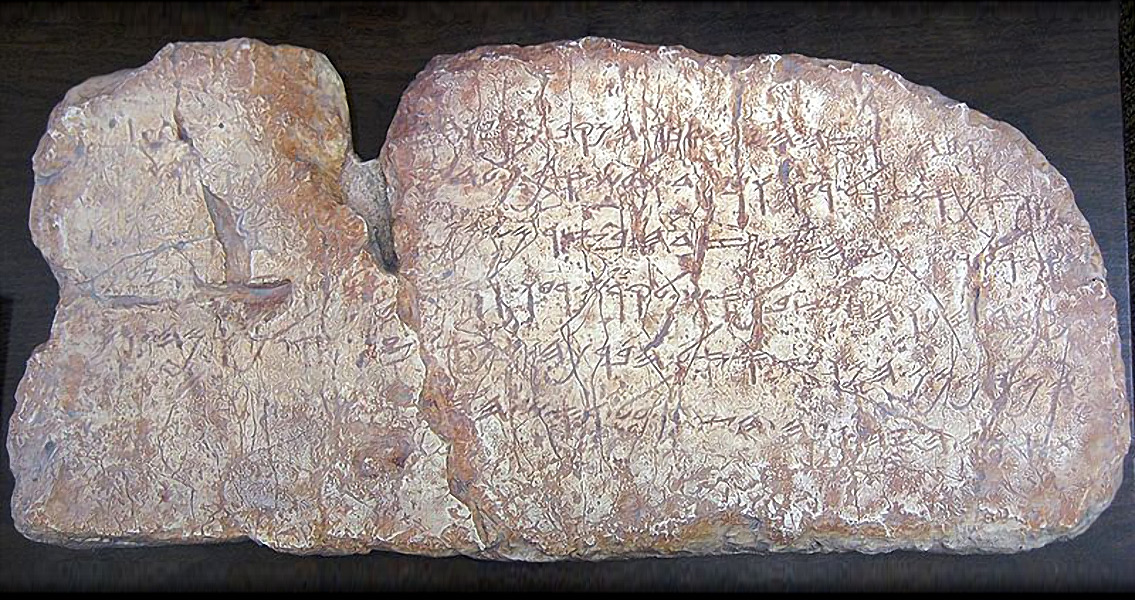<![CDATA[An inscription bearing the name of one Eshba’al Ben Bada, has been found inside a 3,000-year-old clay jug at a dig in Israel, suggesting writing was more common at the time in Judah than previously thought. The jug was found in pieces at Khirbet Queiyafa, a place that is mentioned in the Bible, three years ago. Now that scientists have put together the pieces, an inscription has been revealed of the name of a man who was apparently a wealthy landowner and agricultural producer, whose produce was transported in jugs bearing his name. Interestingly, he shares the name with a ruler who was a contemporary of king David (who reigned during the first half of the tenth century BCE), Eshba’al Ben Shaul, who is mentioned in the Bible and who was murdered, beheaded and then had his head taken to David, Live Science managing editor Jeanna Bryner writes. In a statement from the Israel Antiquities Authority the lead researchers at the dig, Yosef Garfinkel and Saar Ganor, said the name Eshba’al seems to have only been used during this pre-First Temple period, since there are no records or mention of it later. The jug is the first time the name has been found on an artefact but it is also the fourth example of writing (in ancient Canaanite) from the time when king David ruled Judah, suggesting that writing was a more common practice than thought previously. Khirbet Queiyafa, which lies 30 km to the southwest of Jerusalem, is a major archaeological site in Israel that has yielded some very interesting evidence from the reign of king David, including a whole fortified city, a palace, a storeroom, some individual homes, and two gates. It was also the place where the oldest Hebrew inscription was found, in 2008. The discovery spurred suggestions that some parts of the Old Testament were written much earlier than previous thought, due to the nature of the text, which went as follows, as quoted by Live Science: 1' you shall not do [it], but worship the [Lord]. 2' Judge the sla[ve] and the wid[ow] / Judge the orph[an] 3' [and] the stranger. [Pl]ead for the infant / plead for the po[or and] 4' the widow. Rehabilitate [the poor] at the hands of the king. 5' Protect the po[or and] the slave / [supp]ort the stranger. The name inscription on the jug is the second written artefact found at Khirbet Queiyafa, the other two examples of writing that have been discovered from the time of king David were found in Jerusalem and Bet Shemesh; an archaeological site lying between two ancient cities, Zorah and Eshtaol, near Jerusalem. Before the tenth century BCE Hebrew inscription was discovered, scientists had believed the earliest texts from the Bible’s Old Testament dated from the sixth century BCE, and it was thought that written Hebrew was no older than that. The piece of pottery on which the text was written in ink further debunked this belief after it was deciphered by Biblical Studies professor Gershon Galil from the University of Haifa. The artefact itself was discovered by Garfinkel, who, in his joint statement with Ganor, said this latest discovery would radically change our understanding of how popular writing was in the kingdom of Judah, noting that just a few years ago there were no written artefacts from that period. Image courtesy of Wikimedia Commons user: Wikikati ]]>
3,000-Year-Old Inscription Found at Ancient Judean Dig
